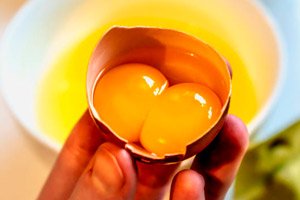
All iLive content is medically reviewed or fact checked to ensure as much factual accuracy as possible.
We have strict sourcing guidelines and only link to reputable media sites, academic research institutions and, whenever possible, medically peer reviewed studies. Note that the numbers in parentheses ([1], [2], etc.) are clickable links to these studies.
If you feel that any of our content is inaccurate, out-of-date, or otherwise questionable, please select it and press Ctrl + Enter.
Egg Yolk and Bone Health: Peptides Reduce Osteoclast Activity
Last reviewed: 09.08.2025

Osteoporosis develops when the balance of bone "builders" (osteoblasts) and "destroyers" (osteoclasts) shifts towards resorption. Effective drugs exist, but some patients are afraid of side effects, so there is a growing interest in food bioactive molecules. A team from the University of Alberta reported that water-soluble egg yolk hydrolysate and especially its low-molecular-weight subfraction FC1 (<3 kDa) suppress osteoclastogenesis in a cell model and simultaneously enhance apoptosis of mature osteoclasts. The work was published in Food Science of Animal Products.
Research methods
- Material: three water-soluble fractions of yolk hydrolysate (FA, FB, FC) and two subfractions of FC (FC1 <3 kDa and FC2 >3 kDa).
- Osteoclastogenesis model: RAW264.7 macrophage lines induced by RANKL (validated system for studying osteoclast differentiation).
- Ratings:
- number of TRAP-positive multinucleated cells;
- expression/phosphorylation of MAPK cascade proteins (p38, JNK, ERK), critical for osteoclast maturation;
- markers of apoptosis in mature osteoclasts (early/late).
- Dose range: up to 1000 mcg/ml (upper test concentration for fractions/subfractions).
Key Results
- Anti-osteoclastogenic effect: the FC fraction was stronger than FA/FB, and FC1 was the most active: at the upper dose it reduced the number of TRAP-positive osteoclasts by approximately half (dose-dependently). Separate reports indicate that at 1000 μg/ml the proportion of TRAP-positive cells decreased to ~53% (FC1) and ~84% (FC2) of the control level.
- Signaling pathways: FC1 suppressed RANKL-induced p38/JNK/ERK phosphorylation, thereby disrupting a key pathway of osteoclast differentiation. The effect was dose-dependent.
- Apoptosis of mature osteoclasts: early and late apoptosis increased, which complements the anti-resorptive effect (fewer new osteoclasts + accelerated death of existing ones).
Interpretation and clinical conclusions
- Mechanistically, FC1 acts with a double whammy: it interferes with osteoclast maturation via inhibition of the MAPK cascade and accelerates apoptosis of already formed cells, which should reduce bone resorption. From a practical perspective, low molecular weight yolk peptides (<3 kDa) appear to be candidates for functional ingredients/supplements in osteoporosis prevention.
- Important: all data are in vitro on cells; bioavailability, metabolism, in vivo efficacy and safe working doses in animals/humans are not shown. Before talking about the clinic, we need:
- animal studies (absorption, distribution, effects on bone density/microarchitecture, markers of bone resorption/formation);
- assessment of the stability of fractions in products/gastrointestinal environment;
- randomized clinical trials with clinical endpoints.
What exactly in the "yolk" can work?
Egg yolk is rich in proteins (including phosvitin) and phosphopeptides; Wu's group previously demonstrated the osteogenic potential of egg components in osteoblastic models. The new result completes the picture: low-molecular-weight yolk peptides can target osteoclasts, not just stimulate osteoblasts. This reinforces the interest in dietary peptides as modulators of bone remodeling.
Restrictions
- The RAW264.7+RANKL model is standard and convenient, but is not equivalent to primary human osteoclasts; the transferability of the effect is limited.
- Off-target effects on other pathways (NF-κB, NFATc1/c-Fos, etc.) and functional outcomes (mineralized matrix resorption) have not been studied.
- Different sources provide divergent numerical estimates of the effect size on TRAP-positive cells; access to the full text is required for accurate interpretation of the metrics.
Authors' comments
“This study opens up an exciting possibility for bone health: by isolating a water-soluble subfraction of FC1, we found a natural component that both inhibits osteoclast differentiation and triggers their apoptosis,” said co-author Jianping Wu. He said such fractions could form the basis of a functional ingredient or supplement for the prevention of osteoporosis, subject to subsequent preclinical and clinical testing.
